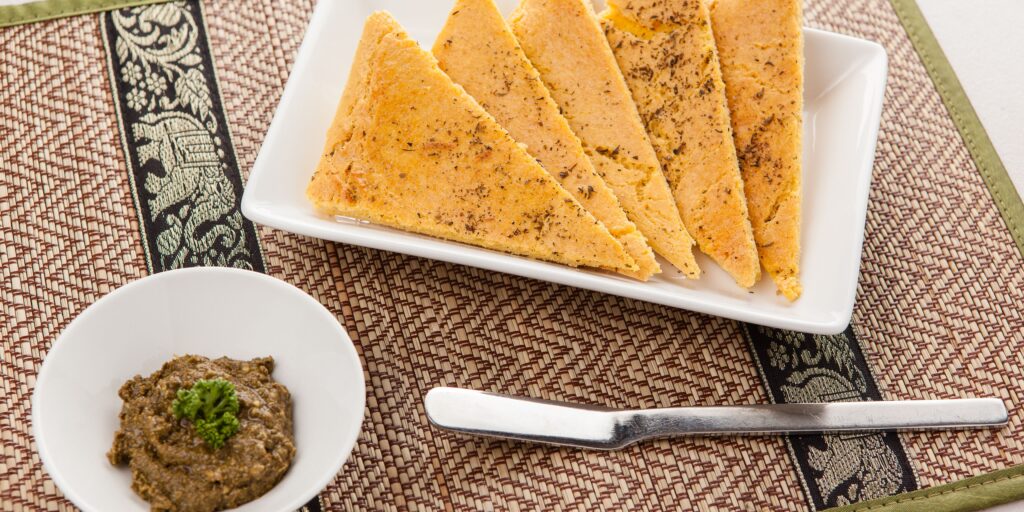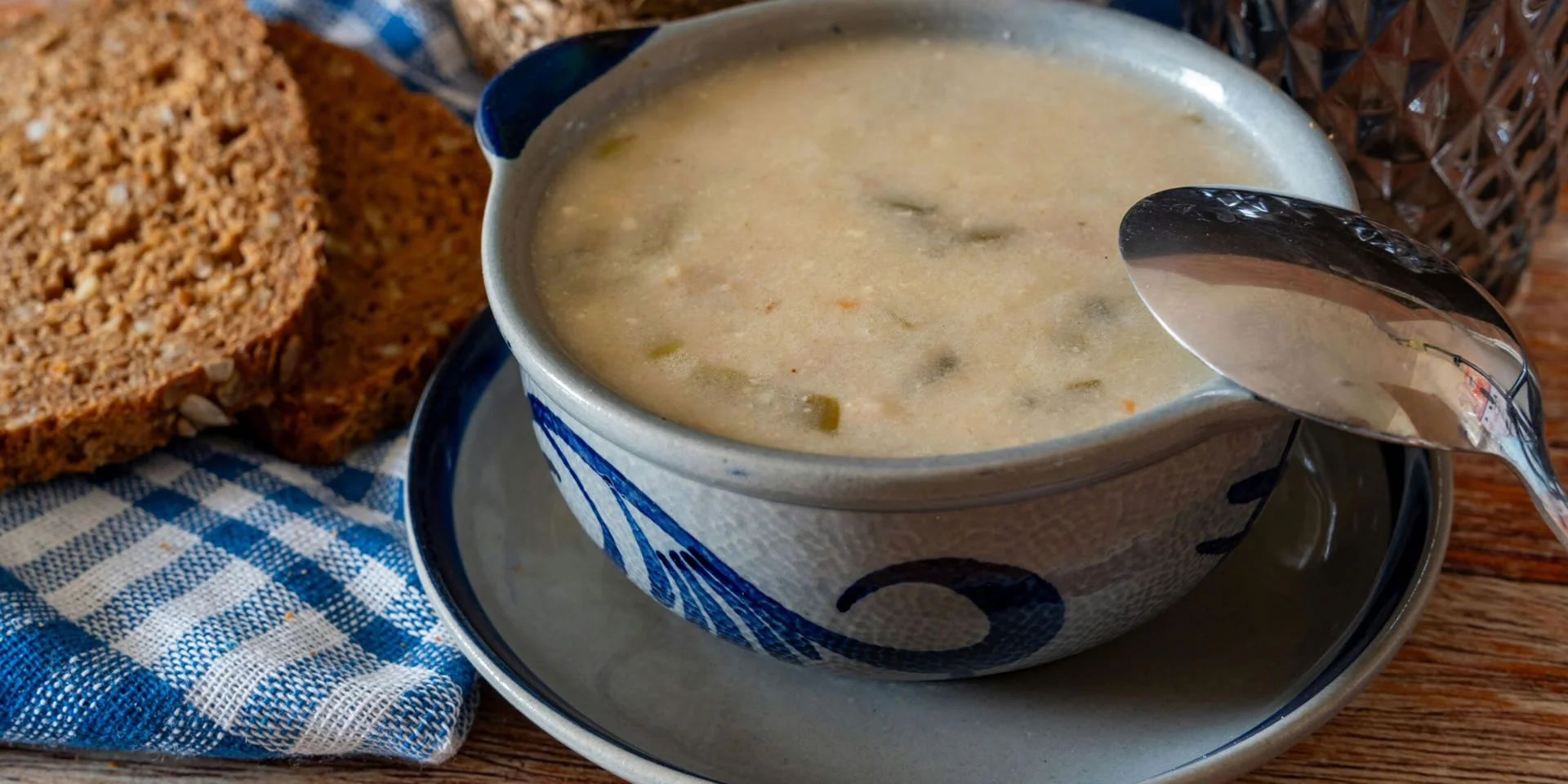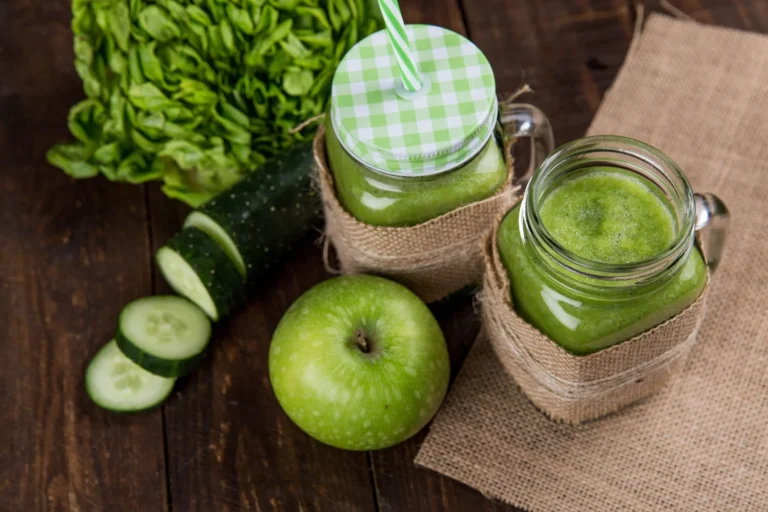Many health practitioners and diet plans (Paleo, AIP, etc.) recommend the complete removal of beans and grains to achieve a lectin-free diet for chronically ill patients who are sensitive to these compounds.
However, it is possible to remove lectins from beans (also known as legumes) and grains by preparing them properly instead. You might have already heard about this.
Soaking at least overnight, boiling or pressure cooking, sprouting, and fermenting, deactivate lectins and significantly reduce other types of antinutrients like phytic acid.
What I found, however, is while many sources confirm you can remove lectins from beans and grains, few to none talk about how to practically do this in your every day diet.
I decided it was time to fix this problem.
In this post, I’m going to share my tried and true methods for removing lectins from beans and grains, so if you are sensitive, you don’t have to cut them out of your diet in order to enjoy improved gut health and reduced inflammation.
Jump to:
- What’s the big deal about lectins?
- Soaking and Boiling or Pressure Cooking
- Canned Beans
- Sprouted Beans, Grains, and Flour
- Soy Products
- Gluten-Free Bread and Tortillas
- Pasta
- Tree Nuts and Nightshades
What’s the big deal about lectins, though?
Certain phytochemicals in plant foods known as antinutrients, like lectins (prolamins, agglutinins, etc.), phytic acid, oxalates, and others, can be problematic for gut health and inflammation in sensitive individuals.
These phytochemicals are primarily found in beans and grains, but also in smaller amounts in nuts, seeds, and vegetables.
Gluten is related to prolamins, a type of lectin found in grains, but unlike lectins, gluten cannot be removed from foods via traditional preparation methods. So, in the post, we will only be discussing how to remove lectins from gluten-free grains.
- Both lectins and phytic acid can bind to essential vitamins and minerals and reduce their absorption, leading to nutrient deficiencies (which is often already a problem in people with Celiac Disease and other autoimmune conditions).
- Lectins can also spike zonulin levels in the small intestine, leading to increased/hyper intestinal permeability (leaky gut).
- Additionally, lectins can bind to and interfere with the gut lining in other ways, reduce digestive enzyme activity, and trigger an inflammatory immune system response.
As you might imagine, the intestinal barrier and gut health in general affect the the immune system and overall health so much. Research has found a strong link between poor gut health and the development and excacerbation of autoimmune diseases.
That’s why so many nutrition recommendations for autoimmune disease talk about the importance of removing sources of antinutrients like lectins from the diet.
Reduced zonlin levels, an intact gut lining, improved vitamin and mineral absorption, increased digestive enzyme activity, and a smaller (or no) inflammatory immune reponse coming from the intestines can make a world of difference for the health of people who are sensitive to antinutrients like lectins and phytic acid.
How to Eat Beans and Grains on a Lectin-Free Diet – My Step by Step Guide
1. Soaking and Boiling or Pressure Cooking
The first thing that usually pops up when you do a Google search for how to remove antinutrients from either beans or grains is to soak and then boil or pressure cook them. Pressure cooking offers more complete deactivation of antinutrients, but boiling works too, as long as do you it for long enough.
This is easy enough to do when you’re cooking something like dried beans, lentils, split peas, rice, or buckwheat groats from scratch.
However, it doesn’t account for times you may want to use canned beans, or eat pasta, bread, tortillas, or make baked goods.
Additionally, there is a surprising challenge to properly preparing beans and grains in this traditional way.
When you’re cooking lentils, rice, quinoa, or something similar where the end result is not going to end up in a soup or stew, you have to follow a specific bean/grain to water ratio in order for it to turn out right – not too dry and not too mushy. When you soak beans and and grains overnight, or even for several hours, you’ll find they absorb a LOT of water. If you don’t adjust the amount of water you use when cooking them afterwards, you will get a mushy and unappetizing end result.
How are you supposed to know exactly how much water gets absorbed during the soaking process, though? If you’re thinking the amount could vary a lot depending on what you’re soaking – you’re right!
The easiest way around this challenge is to soak the bean or grain in the amount of water you would normally use to cook it with. Then, at the end of the soaking process, measure the remaining liquid before you rinse and drain the bean or grain. Finally, cook the bean or grain in the amount of liquid that was remaining (but use fresh water), and for half the typical cooking time.
For example, perhaps you want to cook brown rice in the Instant Pot, and you would normally cook 1 cup of brown rice to 2 cups of water for 22 minutes manual on high pressure. First, you would soak 1 cup of brown rice in 2 cups of water overnight, or for at least several hours. After soaking, let’s say you measure the remaining liquid and there is 1 cup of water left. You’ll then drain and rinse the brown rice, and add it to the Instant Pot with 1 cup of fresh water. Instead of 22 minutes, you’ll halve the time and cook the rice for 11 minutes.
I have found lentils absorb more water than gluten-free grains and pseudo-grains. However, even if there is very little water left after soaking, you can still cook them in the Instant Pot because the lentils themselves have absorbed so much water and will release steam during the cooking process.
Following this method gets me near-perfect results every time.
2. Canned Beans
Being completely transparent, I usually don’t prepare my beans from scratch for the sake of conserving time and effort. I know a lot of other people are in the same boat as me.
If you typically cook with canned beans instead of preparing them from scratch, you’ll need a slightly different approach if you want to remove the lectins from the beans before eating them. This is because beans are not soaked or pressure cooked during the process of canning them.
I have found two possible ways to go about this.
If you’re going to cook the beans in the recipe you’re making (boiling on the stove or pressure cooking), all you have to do is drain, rinse, and then follow the recipe instructions.
However, if it’s a cold/chilled recipe such as hummus, bean puree, or chickpea salad, there are two brands that process their canned beans in a way that removes the lectins – Eden Organic and Jovial. They soak and pressure cook their beans in the canning process. With these beans, all you need to do is drain and rinse them, and you’re good to go.
In my area, you can find Eden Organic beans at Earth Fare, Whole Foods, Publix, and The Fresh Market.
Jovial beans are at Earth Fare, Whole Foods, Sprouts, and The Fresh Market near me.
3. Sprouted Beans, Grains, and Flour
Sprouting beans and grains before you boil or pressure cook them adds an additional layer of lectin-removal and helps make them easily digestible.
However, sprouting is especially important if you’re going to make a recipe where the bean or grain will not be boiled or pressure cooked before consumption. Think falafel, oatmeal, or really any baked good that isn’t grain-free.
If you can find the time in your schedule to soak and sprout dry beans and grains before cooking them, that’s the most straightforward way to go about this.
If you don’t have time to sprout beans and grains yourself, it’s a little tougher to find ways to make sprouting work for you.
It’s also quite complicated for flour, because you would have to re-dehydrate the bean or grain after sprouting it in order to be able to mill it into flour.
Luckily, several brands offer sprouted beans, grains, and flour that are ready to go as-is!
My absolute favorite source for sprouted beans, grains, and flour is the Pure Living brand, which you can find on Amazon, as well as Vitacost. Their sprouted garbanzo bean flour is the best!
TruRoots makes organic sprouted lentils, quinoa, and brown rice. Lundberg also makes several types of sprouted rice.
To Your Health Sprouted Flour Co. used to make some incredible products as well, but unfortunately closed down last year.
One Degree makes excellent gluten-free organic sprouted oats, which you can find on Amazon, at Costco, and in health food stores.
With these options, it’s easy to make a batch of lectin-free falafel from sprouted chickpeas, or to make any of your favorite baked goods with sprouted flour.
Of course, you can always search for grain-free, Paleo recipes for your favorite baked goods, too. These are lectin-free as is!
4. Soy Products
It deserves a mention that organic, fermented soy products like tempeh, miso, and natto contain only negligble amounts of lectins due to the fermentation process.
If you are reducing lectins in your diet, but would like to have a non-fermented variety of minimally processed soy like tofu or edamame – try sprouted versions! Wildwood makes their tofu from sprouted soybeans. Near me, their tofu is available at Whole Foods, Sprouts, and Earth Fare.
5. Gluten-Free Bread and Tortillas
Since fermentation breaks down antinutrients like lectins, gluten-free sourdough is a fantastic option for bread and tortillas with negligible amounts of lectins present.
The only problem is, not everyone has time to make sourdough from scratch, and gluten-free sourdough is a rare find at the store.
Thankfully, there are a few brands I have found that each make different varieties of gluten-free sourdough products.
Pacha carries buckwheat sourdough bread, english muffins, and tortillas. In my area, their products are available at Whole Foods.
Bread Srsly offers gluten-free white sourdough loaves, sandwich rolls, and dinner rolls. They are a California-based brand, so they’re not available in any stores where I live. You can purchase their products online, though.
Simple Kneads carries gluten-free whole grain sourdough loaves, without any seed oils, and their quinoa variety is oil-free. They are available at Earth Fare (for $7!), Whole Foods, and Sprouts in my area.
Alternately, you can go for grain-free bread and tortilla brands.
My personal favorite grain-free bread brand is Grain Escape. I’ve tried their sandwich bread, bagels, and hamburger buns, and they are all delicious (and low carb!). You can find them at Earth Fare and Sprouts near me. My local Sprouts often has BOGO sales, so you can get two loaves for $5 each!
Base Culture is another grain-free bread brand, but it’s a bit different than Grain Escape in that their primary ingredient is almonds. Since I’m allergic to almonds, I haven’t been able to try their products, but I have heard great things about them. Publix, Harris Teeter, Earth Fare, Sprouts, Whole Foods, and The Fresh Market carry their breads near me.
Siete Foods makes fabulous grain-free tortillas and tortilla chips, as well. One of their tortilla varieties contains almond flour, but the coconut and cassava flavor is nut-free. They’ve made their way into many grocery stores, so they’re easy to find now. You can even find a few of their products at Walmart!
6. Pasta
Not everyone is a pasta person, but I sure am, and I know I am not alone in this.
The most popular options for gluten-free pasta tend to be either brown rice or chickpea based. For lectin-sensitive individuals, these options are not the best, because pasta cannot be properly prepared via soaking and boiling or pressure cooking. It would simply fall apart into a puddle of mush.
While it would be possible for dried pasta to be made with sprouted brown rice flour or sprouted chickpea flour, so far, no brands have attempted this endeavor.
Because of this, you might think if you’re sensitive to lectins that you’ll have to avoid pasta forever. But – excitingly – that is not the case!
Both millet and sorghum grains naturally contain no lectin antinutrients at all, which sounds too good to be true, but believe it or not, it’s legitimate.
Big Green Organic Food (available on Amazon) makes both millet and sorghum versions of macaroni, rotini, penne, shells, spaghetti, and ramen noodles. I have tried their sorghum pasta before, and it is wonderful! It tastes the closest to traditional wheat pasta of any gluten-free pasta I have ever tried. Their prices are higher than typical gluten-free pasta in the store, but their products are a great option for people who can’t tolerate pasta unless it is lectin-free.
If you’d like an option you can find in the store, Jovial makes several varities of Cassava flour pasta – penne, fusilli, macaroni, orzo, and spaghetti. In my opinion, you can tell it’s grain-free, and it’s not my favorite texture. It’s good enough to do the job, though, if you need an acessible grain-free and lectin-free pasta option. In my area, you can find Jovial cassava pasta at Earth Fare, Sprouts, and Whole Foods.
Capello’s makes fresh grain-free pasta from almond flour – ravioli, gnocchi, penne, fettucini, and lasagna. Their products taste like the real deal (I tried them a couple of times before developing an almond allergy), but are extremely expensive. You can expect to pay about $10 for a 9-oz box at your local health food store.
*An honorable mention for tree nuts and nightshade vegetables.
While tree nuts are not very high in lectins, they do contain high levels of another antinutrient called phytic acid. And interestingly, nightshade vegetables (tomatoes, potatoes, eggplant, and peppers) contain large amounts of lectins.
When you prepare beans and grains via the methods we discussed above, their phytic acid content will be significantly reduced at the same time as deactivating the lectins.
What about tree nuts, though? How can you reduce their phytic acid content? It’s more difficult if you want to use nut flour for baking or snack on nut butter or roasted nuts. However, if you are making homemade nut milk, cheese, or sauces, soaking and rinsing the nuts beforehand will significantly reduce the phytic acid content.
Peeling and de-seeding nightshade vegetables helps to significantly reduce their lectin content, so for some lectin-sensitive people, that helps them enjoy their favorite vegetables once more.

Before I go, I have one disclaimer to share.
Not everyone with chronic health issues is sensitive to lectins, and not everyone will experience benefits from reducing or eliminating them. For some people, other dietary changes will make a bigger difference.
For me personally, eating in a way that prevents reactive hypoglycemia is more important than reducing lectins. While I properly prepare my beans and grains and reduce antinutrients where I can, ultimately, it is more important for me to have a low-glycemic pasta, for example, than a lectin-free one.
Nutrition is most often individualistic, so it’s important not to fall victim to any broad, sweeping statements about nutrition that you may hear on the internet. Such as, “Antinutrients are the #1 cause of all chronic health issues!” or “Everyone should be grain-free if they care about their health!”.
If you think you may be sensitive to antinutrients like lectins, you may find it beneficial to speak with a knowledgeable nutrition professional.
If you are lectin-sensitive, I hope this post gives you lots of realistic, accessible ideas on how to eat beans and grains on a lectin-free diet!
As always, please feel free to leave me a comment if you have a question or something you want to share.
This post contains Amazon affiliate links. If you choose to purchase a product through one of those links, I will earn a small commission that helps me support my family, at no additional cost to you.




